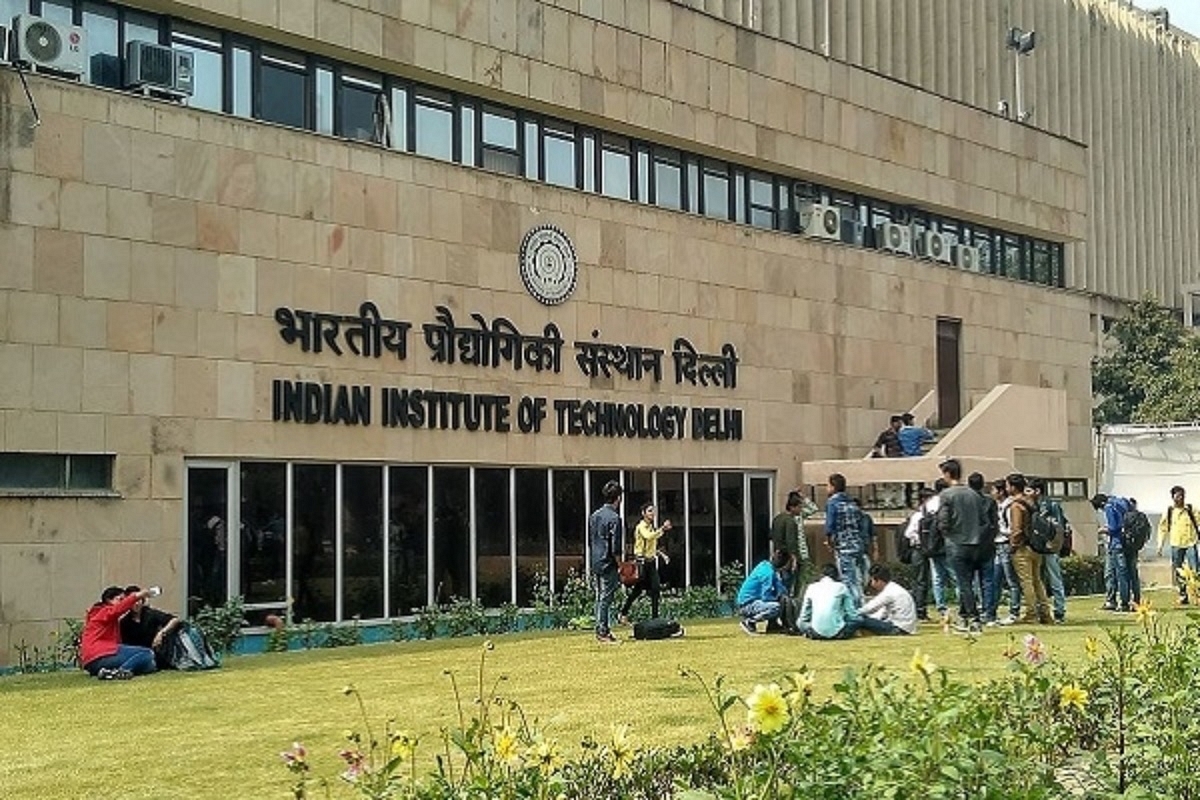Tech
IIT Delhi Researchers Develop Low-Cost Super-Elastic Buckling Restrained Braces To Improve Earthquake Resistance Of Structures

IIT Delhi campus (Representative Image) (Asad K electro/Wikipedia)
Indian researchers have developed low-cost buckling-restrained braces that can give improved protection to constructions from earthquakes.
These braces have several advantages, such as all-steel components, onsite fabrication and assembling process, post-earthquake inspection, and easy replacement.
The earthquake resistance of civil structures is often improved by using seismic force-resisting systems or vibration control devices. Buckling-restrained braces are the special structural elements that serve both purposes.
Researchers at IIT Delhi have fabricated novel hybrid buckling-restrained braces (HBRBs) having higher strength, excellent ductility, and better energy dissipation potential, according to a Science and Technology Ministry release.
Professor Dipti Ranjan Sahoo and his student Dr Ahmad Fayeq Ghowsi of IIT Delhi, who fabricated the braces, studied the seismic performance of more than ten full-scale HBRBs at the full-scale testing facility of the Heavy Structures Laboratory of the Department of Civil Engineering, IIT Delhi developed under Fund for Improvement of S&T Infrastructure (FIST) programme of Central government's Department of Science & Technology.
Tests are being conducted on specimens with improvements and modifications at the laboratory, and according to Professor Sahoo, a patent has recently been applied for the proposed bracing system.
A typical HBRB comprises two segments, namely, elastic steel brace (non-replaceable) and short-core BRB (replaceable) segments, connected in series along their lengths. Steel braces can be made up of hollow circular or square hot-rolled structural steel sections.
Superplastic shape memory plates are used at the centralized core elements of BRB, which is encased by unbonded built-up steel casings fabricated using four structural steel rolled angle sections and bolted connections.
The core elements are designed to undergo inelastic deformation under cyclic axial loadings to provide the required strength, ductility, and hysteretic energy dissipation.
“These braces can be customized depending on the seismic demand expected on buildings or bridges located in different seismic zones of India," Sahoo informed.
The proposed technology is effective in the new constructions and has a great potential for the upgradation and retrofitting of seismically deficient reinforced concrete (RC) and steel framed structures, such as residential/office buildings, hospitals, and school buildings.
These braces can also be conveniently adopted in the steel and concrete bridges to enhance their earthquake resistance.
The implementation of this technique in the existing structures reduces overall retrofitting cost and minimizes the intervention and downtime. It is possible to design a structure to achieve the required performance objectives in terms of strength and serviceability utilizing the hybrid buckling-restrained braces.
Support Swarajya's 50 Ground Reports Project & Sponsor A Story
Every general election Swarajya does a 50 ground reports project.
Aimed only at serious readers and those who appreciate the nuances of political undercurrents, the project provides a sense of India's electoral landscape. As you know, these reports are produced after considerable investment of travel, time and effort on the ground.
This time too we've kicked off the project in style and have covered over 30 constituencies already. If you're someone who appreciates such work and have enjoyed our coverage please consider sponsoring a ground report for just Rs 2999 to Rs 19,999 - it goes a long way in helping us produce more quality reportage.
You can also back this project by becoming a subscriber for as little as Rs 999 - so do click on this links and choose a plan that suits you and back us.
Click below to contribute.
Latest